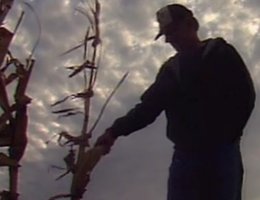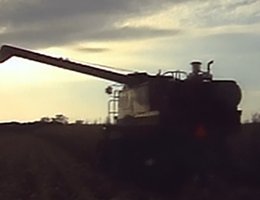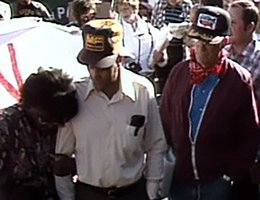
Throughout the history of the central Great Plains region, there have been cycles and factors that affect the lives of those who live here. These factors have always produced results that we can see later.

Some factors are natural — like the cycle of wet years and dry years. This "drought cycle" results in a pattern of good times followed by bad times for the plants, animals and humans living on the Plains.
Technology-New machines, crops, pesticides and irrigation meant that it took fewer farmers to produce the same amount of food in the 1970s. In 1940, one American farmer produced enough food to feed 15 people; by 1960 one farmer could feed 65 people.
Expansion through borrowing-To take advantage of the new technology, farmers felt pressured to buy more land and equipment. Many paid for this by borrowing money from banks. In the early 70s, they were able to grow more, and the prices for their crops were high enough to pay for the expansion.
A good economy-During the mid 1970s, the economy was good. Interest rates were fairly low, so farmers could borrow from banks cheaply. People in foreign countries wanted American food and had the money to pay for it, so they became important to the farmers. And prices for farm land seemed reasonable.

The economy went bad. The economy moves in cycles. In this time period, economic factors starting going down. This forced interest rates up so farmers had to pay more for the loans they needed to operate each year. Also, people tend to buy less during bad economic times, so the prices paid for farm products went down.
Foreign markets dried up, driving prices down further. President Jimmy Carter stopped the shipment of farm products to Russia in 1980 to punish Russia for invading Afghanistan. That hurt the farm export market. And then, other countries ran into hard economic times as well. U.S. farmers could not sell as many goods overseas as they had been.

The 1980s was a period when thousands of farm families lost their farms because of low farm prices and crushing debt. Farming was in a crisis. Many of the farmers who were able to survive the 1980s had to find work off their farms to add to their small farm incomes. There were specific results.
Rural populations declined. Actually, the farm crisis of the 70s and 80s sped up a process that had been going on for some time. In 1935 the number of farms in the United States reached an all-time high of 6.8 million farms. By the mid-1980s, there were only 2.2 million farms.
In this section, we’ll tell the story of the farm crisis and the beginnings of possible new economic opportunities. The same technology that threatens farming on the Plains may offer new ways to make money and revitalize the area.